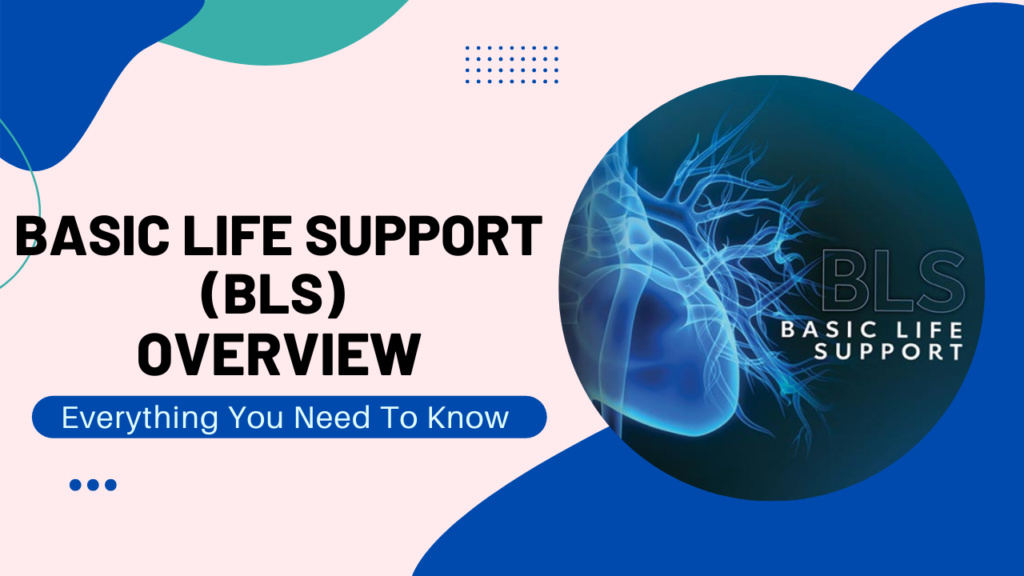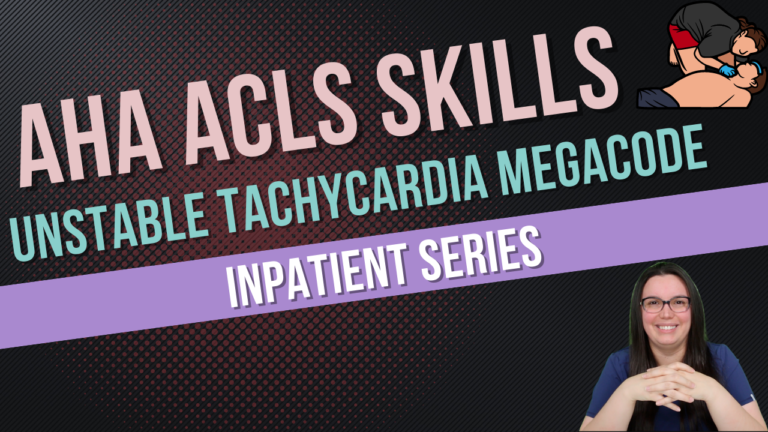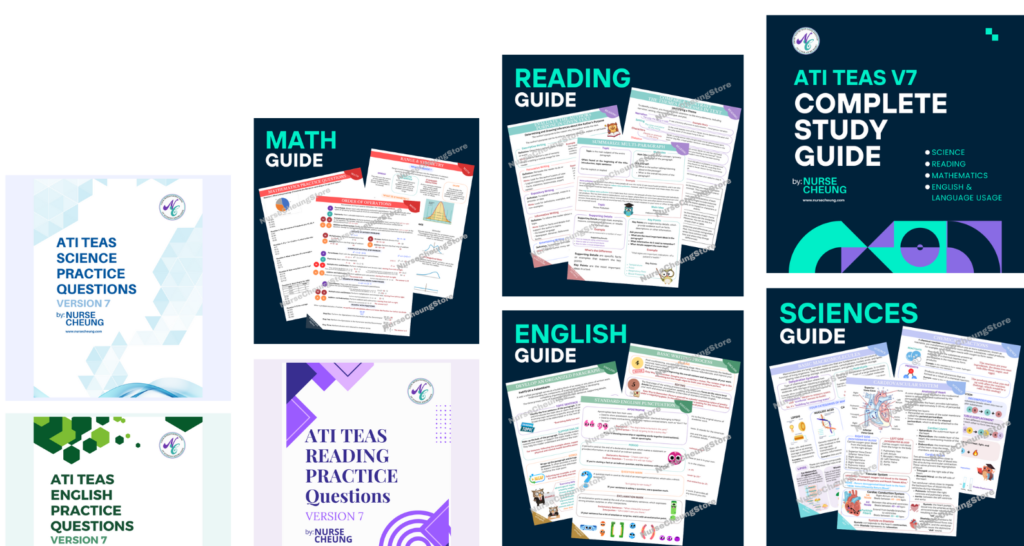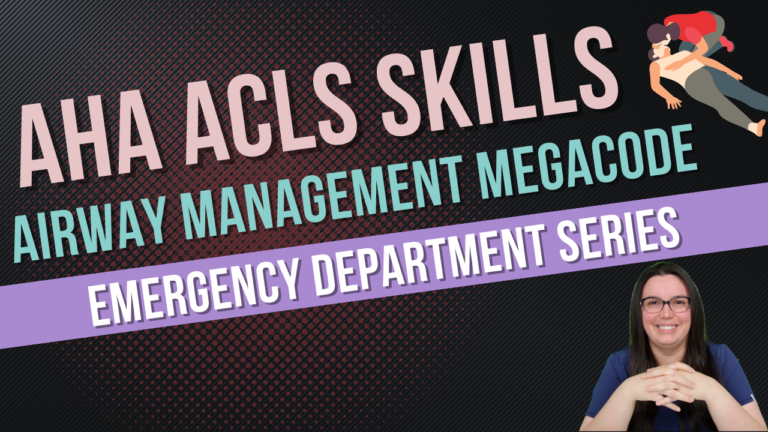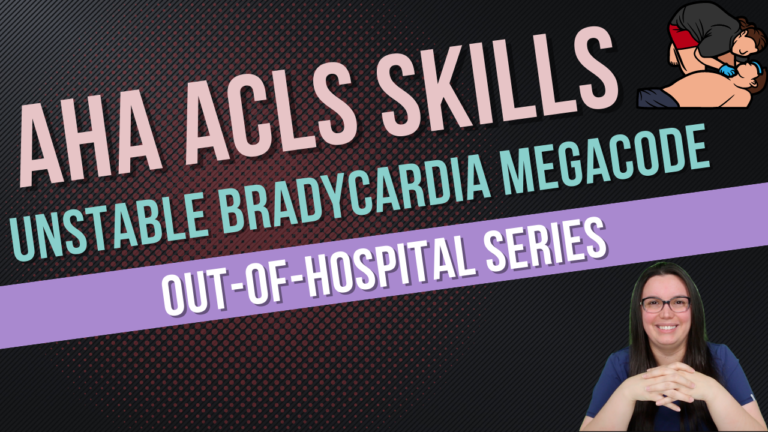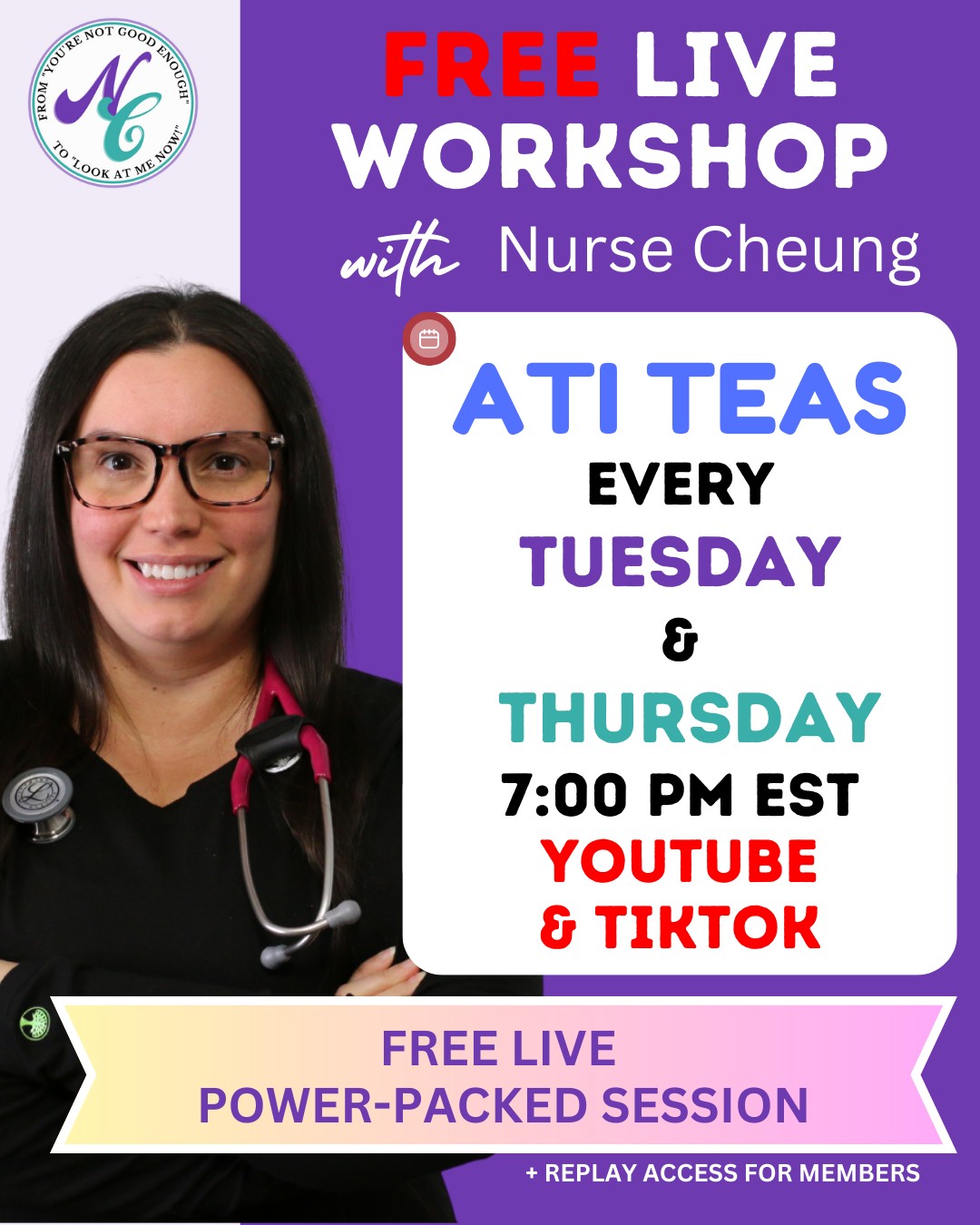If you are a healthcare professional, it is important that you have a working knowledge of Basic Life Support (BLS).
BLS is a set of life-saving protocols that can be used to treat patients who are in cardiac arrest or who are experiencing other life-threatening emergencies.
In this blog post, we will provide an overview of BLS and discuss the steps involved in providing basic care to patients. We will also provide tips for preparing for a BLS certification exam.
Adult Basic Life Support Guidelines
Adult BLS Assessment
The basic steps of BLS are:
- Verify scene safety
- Check for responsiveness
- Call for help (Activate the Emergency Response System)
- Check for breathing and pulse
- Begin chest compressions
- Provide rescue breaths
- Continue chest compressions and rescue breaths until help arrives or the patient begins to breathe on their own
Verify scene safety
Many times you may find that the scene may be unsafe with locations such as in the water, in the middle of the road, etc. If it is not safe, make the scene safe and move the person prior to starting interventions.
Check for Responsiveness
Tap the shoulders and shout “Are you okay?”
If the patient does not respond, then they are unresponsive.
Activating the Emergency Response System
The first step in any emergency is to call for help.
You have two options
- If you have someone near you, have them get help and obtain an AED/Defibrillator
- If you are by yourself, perform a round of CPR then call for help and obtain an AED/Defibrillator
Checking for Breathing and a Pulse
To check for breathing, look for the rise and fall of the chest.
To check for a pulse, place your fingers on the inside of the patient’s neck, just below the angle of the jaw. You will palpate the carotid pulse.
These actions should be performed for a maximum of no more than 10 seconds.
If no breathing or pulse is present, immediately begin cardiopulmonary resuscitation (CPR).
Compressions, Airway, Breathing (CAB)
Chest Compressions Ratios and Placement
For adults, the compression-to-ventilation ratio is 30:2 (30 compressions followed by two breaths).
Begin by placing the palm of your hand over the patient’s sternum just above the xiphoid process. The previous indicator was to place the palm of your hands on the mid-nipple line; however, due to the increase in obesity the nipple line may no longer be the best indicator.
Disclaimer regarding rescue breaths: According to guidelines posted by the American Heart Association on January 24, 2022, appropriate precautions should be worn when providing BLS, ACLS, and PALS standards with potential and confirmed COVID-19 positive patients. All providers should wear a respirator (i.e. N95), gown, gloves, and eye protection for suspected or confirmed COVID-19 infections when performing aerosol-generating procedures (AGP)s. Out of hospital cardiac arrest is dependent on early initiation of CPR including chest compression. It is not recommended for mouth-to-mouth resuscitation at this time but all patients should receive the best resuscitative efforts.
Depth of Chest Compressions
For adults, the depth of chest compressions should be at least two inches (five centimeters).
Chest Compression Rate
The compression rate should be 100-120 compressions per minute.
You can keep track of the rate by counting out loud or using a metronome.
Allow for full chest recoil between compression and minimize interruptions to less than 10 seconds.
Be sure to switch compression team members every 2 minutes.
Airway and Breathing (CAB)
Utilize the head tilt-chin lift or jaw thrust (trauma to the cervical spine).
Rescue breaths are one breath every 5 to 6 seconds. You will want to see visible chest rise and fall within each rescue breath.
It is important to avoid excess ventilation because it can decrease coronary perfusion pressure and a reduction of cerebral blood flow causing PaCO2 to decrease.
How to use an AED/Defibrillator
When the AED arrives, review the instructions with the bystander.
If you are alone, perform one minute of CPR before using the AED.
Step One: Turn on the AED and follow the prompts.
Step Two: After removing the person’s shirt, apply the electrode pads to the patient’s bare chest in accordance with the instructions and plug in the connector. It is important to remove any wet barriers or medication patches before applying the pads.
Step Three: Stop chest compressions and confirm everyone is clear by saying “Stand Clear.”
Step Four: Push the analyze button and the AED will analyze the patient’s heart rhythm and, if needed, deliver a shock.
Step Five: if a shock is recommended, make sure no one is touching the person and repeat “Stand Clear.” Once clear, press the shock button.
Step Six: Immediately begin CPR following the shock or if no shock is advised. Perform another two minutes of CPR and follow the AED prompts again.
Definition of Neonate, Infant, Child, and Adolescent in PALS
Neonate: A baby who is younger than 28 days old
Infant: A child who is between 29 days and 12 months old
Child: A child who is between 13 months and 12 years old (approximately age prior to puberty)
Adolescent: A teenager who is between 13 and 18 years old (when puberty is present either through armpit hair or breast development)
Basic Pediatric Life Support Guidelines
Pediatric BLS Assessment
The basic steps of Pediatric BLS are:
- Verify Scene Safety
- Check for responsiveness
- Call for help (Activate the Emergency Response System)
- Check for breathing and pulse
- Begin chest compressions
- Provide rescue breaths
- Continue chest compressions and rescue breaths until help arrives or the patient begins to breathe on their own
Verify the scene is safe
Many times you may find that the scene may be unsafe with locations such as in the water, in the middle of the road, etc. If it is not safe, make the scene safe and move the person prior to starting interventions.
Check for Responsiveness
Tap the shoulders of a child or the heel of an infant and shout “Are you okay?”
If the patient does not respond, then they are unresponsive.
If the person does not respond, shout for nearby help and activate the emergency response system.
If no one responds, DO NOT LEAVE THE CHILD. Perform one round of CPR prior to finding help.
Activating the Emergency Response System
The first step in any emergency is to call for help.
You have two options
- If you have someone near you, have them get help and obtain an AED/Defibrillator
- If you are by yourself and have a mobile phone, call for emergency medical services and perform CPR
Checking for Breathing and a Pulse
To check for breathing, look for the rise and fall of the chest.
To check for a pulse, the placement of your fingers will be dependent on the person’s age.
- Infant: palpate the brachial pulse
- Child: palpate the carotid or femoral pulse
These actions should be performed for a maximum of no more than 10 seconds.
If no breathing and pulse are present, immediately begin cardiopulmonary resuscitation (CPR).
Compressions, Airway, Breathing (CAB)
Chest Compressions Ratios, Placement, and Depth
For pediatric persons, there are three options for single-rescuer infant CPR.
30 chest compression: 2 breaths and 1 1/2 inches or 4cm in depth
- 2 fingers in the center of the infant’s chest, the lower half of the breast bone
- 2 thumbs in the center of the infant’s chest, the lower half of the breastbone
- 1 hand in the center of the infant’s chest, the lower half of the breastbone
Two-rescuer infant CPR
15 chest compressions: 2 breaths and 1 1/2 inches or 4cm in depth
- 2 thumbs in the center of the infant’s chest, the lower half of the breastbone
Children CPR Standards
30 chest compressions: 2 breaths and 2 inches or 5cm in depth
- 1 or 2 hand(s) in the center of the child’s chest, the lower half of the breast bone
Disclaimer regarding rescue breaths: According to guidelines posted by the American Heart Association on January 24, 2022, appropriate precautions should be worn when providing BLS, ACLS, and PALS standards with potential and confirmed COVID-19 positive patients. All providers should wear a respirator (i.e. N95), gown, gloves, and eye protection for suspected or confirmed COVID-19 infections when performing aerosol-generating procedures (AGP)s. Out of hospital cardiac arrest is dependent on early initiation of CPR including chest compression. It is not recommended for mouth-to-mouth resuscitation at this time but all patients should receive the best resuscitative efforts.
Chest Compression Rate
The compression rate should be 100-120 compressions per minute for infants, children, and adolescents.
You can keep track of the rate by counting out loud or using a metronome.
Allow for full chest recoil between compression and minimize interruptions to less than 10 seconds.
Be sure to switch compression team members every 2 minutes.
Airway and Breathing (CAB)
Utilize the sniffing position which requires flexion of the cervical spine and extension of the atlantooccipital joint.
Rescue breaths are one breath every 2 to 3 seconds regardless if there is an advanced airway present or not. You will want to see visible chest rise and fall within each rescue breath.
It is important to avoid excess ventilation because it can decrease coronary perfusion pressure and a reduction of cerebral blood flow causing PaCO2 to decrease.
How to use an AED/Defibrillator
When the AED arrives, review the instructions with the bystander.
Step One: Turn on the AED and follow the prompts.
Step Two: After removing the person’s shirt, apply the electrode pads to the patient’s bare chest in accordance with the instructions and plug in the connector. It is important to remove any wet barriers or medication patches before applying the pads.
- If the person is under 8 years old, use the child pads if available. If child pads are not available, you may use adult pads. Place pads so they do not touch each other. One pad is placed on the chest and the other pad is placed on the back. Pads should sandwich the heart when placed appropriately.
- If the person is 8 years old or older, use the adult pads. Do not use child pads as the shock will be too low of a dose
Step Three: Stop chest compressions and confirm everyone is clear by saying “Stand Clear.”
Step Four: Push the analyze button and the AED will analyze the patient’s heart rhythm and, if needed, deliver a shock.
Step Five: if a shock is recommended, make sure no one is touching the person and repeat “Stand Clear.” Once clear, press the shock button.
Step Six: Immediately begin CPR following the shock or if no shock is advised. Perform another two minutes of CPR and follow the AED prompts again.
Agonal Breathing with a Pulse
If you see agonal breathing, it is still important to provide rescue breaths if there is a pulse present. Agonal breathing is an abnormal pattern of gasping and is not considered effective breathing.
Provide one rescue breath every 2 to 3 seconds with or without an advanced airway.
Foreign Airway Obstruction
Adult and Children Foreign Body Airway Obstruction
Conscious
Step One: Ask the person “Are you choking?” If the person nods “yes” and cannot talk, severe airway obstruction is present.
Step Two: Ask the person if they would like help. If they nod “yes,” move on to step three. If they nod “no,” then you must respect their wishes.
- Important to note: if you help a person who does not want help this can be considered battery
Step Three: Provide up to five abdominal thrusts (Heimlich maneuver) or chest thrusts for pregnant or obese persons who are responsive.
Step Four: If the object does not dislodge after five abdominal thrusts or chest thrusts, call 911 and continue with abdominal thrusts.
Unconscious
Step One: Activate the emergency response system through your mobile phone or send someone for help.
Step Two: Begin CPR starting with compressions.
- Important to note: if the person originally said no to help when they were conscious, when the person falls unconscious consent in implied at this point and you should begin CPR
Step Three: If you see the object, remove it if possible. If you cannot see the object and do not have gloves, do not attempt to remove the object.
Step Four: If you have gloves and can see the object, attempt to remove it. If unsuccessful, continue with CPR until there is return of breathing and pulse.
Infant Foreign Body Airway Obstruction
Conscious
Step One: If the person cannot make any sounds or breathe, severe airway obstruction is present.
Step Two: Hold the infant face-down in your hand while supporting the head and provide five back slaps between the shoulder blades with the heel of your hand.
Step Three: If the object does not dislodge, turn the infant over and give five chest thrusts in the center of the chest.
Step Four: Begin Pediatric CPR Guidelines if you lose the pulse and breathing.


